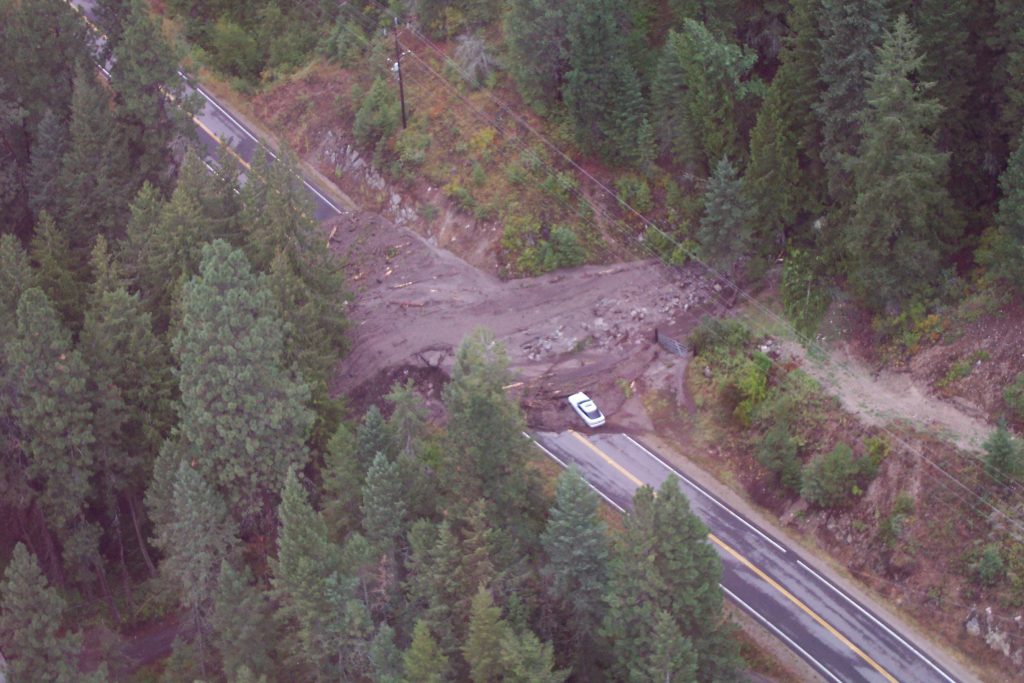Wildfire land-based recovery is a phase of emergency management where steps are taken to recover native ecosystems and repair infrastructure affected by wildfires and/or wildfire suppression activities. Recovering an area affected by wildfire aims to improve the sustainability and resiliency of the landscape where feasible and to reduce vulnerability and future negative impacts by wildfire.
There are many ways wildfire recovery is carried out, from repairing damaged infrastructure to improving the resiliency of forests to better withstand future disasters. In addition to the Ministry of Forests (FOR), wildfire land-based recovery work is carried out by local governments, First Nations, industry, stakeholders and other organizations throughout the province.
How wildfire affects the landscape
Every wildfire is unique and results in different impacts to the land. Many forests in B.C. are dependent on periodic, low intensity fires to clear surface litter, recycle nutrients back into the soil, promote new growth, eradicate pest and disease, maintain wildlife populations and reduce future wildfire intensity.
Most wildfires in B.C. do not result in significant risk or damage. However, the location and intensity of some wildfires can result in large areas of severely burned soils and vegetation and damage to habitats and infrastructure. These types of wildfires are typically fueled by a combination of high temperatures, prolonged drought, strong winds and excessive fuel loading due to historic suppression of fire on the landscape. Wildfires alter vegetation cover and ground surface conditions resulting in changes to the amount and flow pattern of water, which can lead to soil erosion, debris flows, landslides or floods as well as hamper natural recovery of native ecosystems.
Wildfire land-based recovery activities are divided into three categories:
- Wildfire suppression rehabilitation
- Post wildfire natural hazard risk analysis
- Wildfire recovery plans
Impact of wildfire suppression activities on the landscape
The BC Wildfire Service is guided by best practices in order to minimize damage to the landscape. However, during wildfire response, land damage may occur due to necessary wildfire suppression work. Common types of land damage caused by wildfire suppression activities include:
- Altered natural drainage systems and waterbodies from heavy equipment use
- Surface erosion and instability caused by exposed soils
- Increased fuel loading from clearing away vegetation
- Exposed protected areas from new roads, fire guards or open pathways
- Damage to infrastructure such as fences and roads from heavy equipment use
Wildfire suppression rehabilitation work
The Ministry of Forests (FOR) is responsible for public land management and can rehabilitate damage on Crown land resulting from wildfire suppression activities. Once a wildfire is no longer Out of Control, rehabilitation practitioners enter the affected areas and determine whether land impacted by fire suppression activities such as fireguards, requires intervention to repair ecosystem function and initiate native recovery. Rehabilitation activities on private land are led by Wildfire Risk, the program area within the BC Wildfire Service that oversees and manages claims, litigation and recoveries among other things.
Post wildfire natural hazard risk analysis

Public safety after a wildfire remains the highest priority. Post wildfire natural hazards such as soil erosion, floods, rockfall, landslides and snow avalanches can occur due to the changes in forest cover, ground surface conditions and an ecosystem’s water cycle. These natural hazards can pose a threat to public safety as well as critical infrastructure, natural resources, and cultural resources. FOR geomorphologists and soil scientists are tasked with identifying wildfires that could pose a threat and, if warranted, conduct an analysis to identify, analyze and estimate the risk. These reports are then shared with the Ministry of Emergency Management and Climate Readiness (EMCR) who are responsible for communicating the results of these reports.
Wildfire recovery plans
Wildfires are natural and necessary in maintaining healthy forests in B.C. For most low intensity wildfires, much of the recovery occurs naturally. Certain areas that have been severely damaged by fire may benefit from human intervention and the development of a wildfire recovery plan to help initiate and recover native ecosystems.
Planning for recovery begins during the response phase by considering the potential social, economic and environmental impacts a wildfire may have on an area. Wildfire recovery plans are developed in collaboration with local governments, First Nations and stakeholders to identify, maintain and restore a wildfire affected area.
